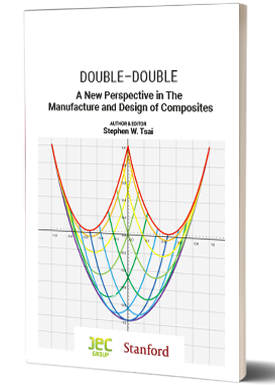Description
This publication provides insights into the key challenges facing the composites industry today to develop new technologies, modernize, expand, innovate, create new applications and grow profitably, while also addressing the need for using more environmentally friendly, sustainable and recyclable materials. Welcome to the challenging world of composites.
With its origins in the 1940s, the early glass reinforced plastic materials have now become part of a much bigger and sophisticated global composites industry, which over the last 75 years has seen the development of new raw materials, production processes and design engineering capabilities which have enabled the use of composites materials in applications never thought possible.
From wind turbine blades, racing yachts, Airbus A350 and Boeing B787 fuselages, Formula 1 racing car chassis, and the lotus-flower-shaped roof of the ArtScience Museum in Singapore Bay, high performance applications using composites are now globally found in every advanced industry sector thanks to their unique combination of properties and performance in use benefits.
Due to being strong, lightweight and corrosion resistant, composites are now found in everyday products. Glass fibre and carbon fibre based composite parts are now found in road and rail public transport vehicles and infrastructure, in buildings, cars, planes, boats, lorries, fire engines, agricultural vehicles and in many sports & leisure consumer goods, such as skis, golf clubs, tennis racquets, fishing rods, smartphone and tablet protective covers, crash helmets and eyewear frames.
Since it started in 1997, the JEC Group has supported the composites industry and continues to play an essential role as a catalyst, fostering the sharing of knowledge and know-how between organizations, providing information services, global and local networking opportunities and forums where people can exchange ideas and develop new market opportunities in composites.
Digital features & Additional content – interactive e-book containing additional video content – when the print version is purchased
- Interactive multimedia e-book format
- Videos, with additional information from:
- Frédérique Mutel (JEC Group, President & CEO)
- Stephen Tsai (Stanford University, Professor, Dept. of Mechanical Engineering)
- Alan Nettles (Stanford University, Composite Materials Engineer)
- Andrew Mafeld (Connectra, Managing Director)
- Kanemasa Nomaguchi (Plastics Lining Association, President)
- Axel D. Seifert (Seifert and Skinner & Associates, Managing Associate)
Publication date: June 2013
















